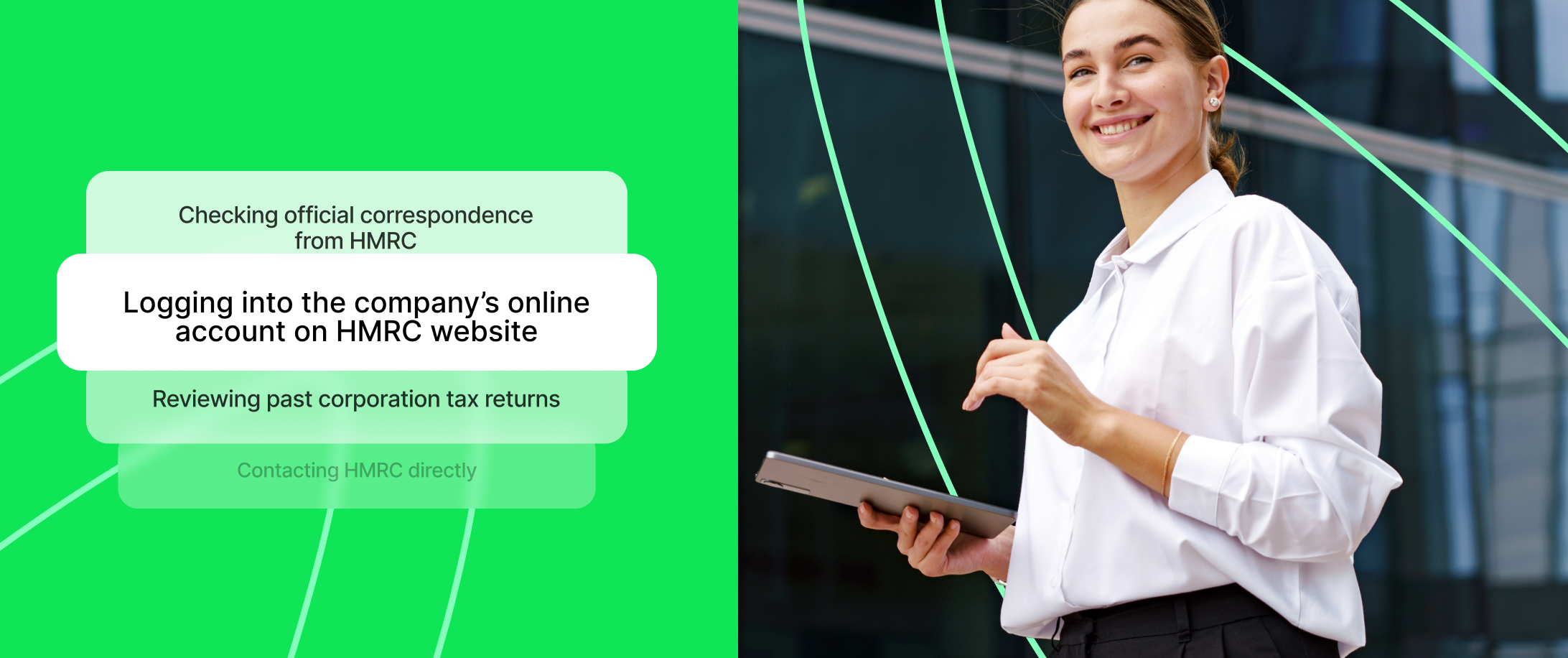Running a business in the UK means dealing with taxation, financial reporting, and regulatory compliance. One of the most essential identifiers for tax purposes is the Unique Taxpayer Reference (UTR) number. Issued by HM Revenue and Customs (HMRC), this number is assigned to organizations and individuals for tax-related activities. Limited companies, sole traders, and partnerships all need a UTR number to fulfill their tax obligations. Understanding how this number works, why it is necessary, and how to obtain it can save businesses from tax complications and administrative difficulties.
Company UTR number explained
A UTR number is an essential part of business taxation, linking companies to their tax records and financial responsibilities. It is issued automatically and must be used for all interactions with HMRC related to corporate taxes.
What is a unique taxpayer reference number?
A UTR number is a 10-digit identifier assigned to individuals and organizations by HMRC. This number helps track tax records, making sure that each taxpayer’s financial details remain distinct. It plays a key role in tax filings, allowing HMRC to process tax payments and returns correctly.
Every UK limited company, partnership, and sole trader receives a UTR number upon registration. This number stays with the business throughout its existence and must be referenced in all tax-related dealings. Without it, companies cannot file tax returns, verify financial records, or register for tax schemes such as the Construction Industry Scheme (CIS). Keeping this number secure and easily accessible guarantees that tax payments and filings are processed without delays or issues.
What is a company UTR number?
A company UTR number is specifically issued to registered businesses, distinguishing it from personal UTR numbers used for self-assessment tax returns. This number is necessary for corporation tax filings, VAT registrations, and financial compliance. It allows HMRC to accurately track tax obligations and payments associated with a particular company.
Unlike a company registration number (CRN), which is used to identify businesses with Companies House, a UTR is strictly for tax purposes. Every business, regardless of size or structure, needs this number to handle tax-related responsibilities. Companies should keep their UTR number private, as unauthorized use could lead to fraud or errors in tax filings.
Does everyone need a unique tax reference?
Not all individuals require a UTR number, but businesses operating in the UK must have one. Employees who pay tax through PAYE typically do not need a UTR unless they are required to file a self-assessment tax return. However, limited companies, partnerships, and sole traders must use a UTR to comply with tax regulations. Even dormant businesses retain their UTR, as they may still need to submit annual accounts or update HMRC on their status.
Organizations without a UTR face challenges in filing returns, paying taxes, and claiming deductions. Without it, HMRC cannot correctly process financial records, potentially leading to fines or administrative issues. Ensuring that your company has a valid UTR number from the beginning of operations can prevent future complications.
Purposes of a UTR number
A UTR number is essential for taxation, serving as a unique identifier that links a company to its financial records, tax filings, and official dealings with HMRC. Without it, essential tax-related tasks become difficult, leading to administrative delays, potential penalties, or compliance issues. Every registered entity, whether newly formed or long-established, must use its UTR correctly to avoid complications. This number plays a key role in several financial and operational areas:
- Filing company tax returns
Every registered entity must submit an annual tax return detailing income, expenses, and deductions. The UTR keeps tax submissions linked to the correct account. If missing or incorrect, HMRC may reject the return, causing delays or fines. Since tax deadlines are strict, keeping this reference number easily accessible helps avoid last-minute problems.
- Paying corporation tax
All companies must settle tax liabilities based on their annual profits. The UTR is required to allocate payments correctly. If omitted or misentered, funds may not be assigned properly, leading to outstanding balances, late fees, or unnecessary disputes. Using the right reference when processing payments online, by bank transfer, or via direct debit prevents confusion and additional paperwork.
- Registering for tax schemes
Certain industries require enrollment in specific tax programs, such as the Construction Industry Scheme (CIS). A UTR is needed when registering, as HMRC uses it to track tax deductions and payments. Companies employing subcontractors must provide this number for compliance, making sure deductions are recorded correctly. The same applies to VAT registration or payroll taxes – without a valid UTR, applications may be delayed or declined.
- Maintaining financial records
This reference appears on all official tax-related documents. Proper record-keeping depends on having complete and accurate financial data, including a correctly recorded UTR. Accountants and tax advisors rely on it when preparing financial reports, submitting corporate filings, or managing deductions. Keeping all records in order makes audits easier and helps avoid discrepancies.
- Receiving correspondence from HMRC
Any official tax-related communication references this number. Notices regarding payment deadlines, tax return requirements, or regulatory updates include the UTR, making it an essential reference in company administration. Losing track of HMRC messages tied to this number may lead to missed deadlines or incorrect filings, resulting in penalties.
Since the UTR remains linked to a company throughout its existence, it should be stored securely and only shared with trusted individuals, such as accountants or financial managers. Unauthorized access could lead to errors in tax filings or financial mismanagement. Keeping this number safe while maintaining well-organized tax documentation supports smooth financial operations and regulatory compliance.
What information must I provide for HMRC?
To obtain a UTR, companies must provide HMRC with key business details, including:
- Registered company name and office address
- Company registration number (CRN) from Companies House
- Date of incorporation and trading date
- Nature of business activities and services provided
- Director’s national insurance number for verification
- Details of tax advisors or accountants managing company’s tax affairs
Submitting accurate information allows HMRC to register businesses correctly and issue a UTR without unnecessary delays. Providing incorrect or incomplete details could result in processing issues or administrative setbacks.

How can I find my company’s UTR number?
A company’s UTR number is issued soon after incorporation and sent to the registered company address. This reference remains essential for tax payments, filings, and official communications with HMRC. If the number is misplaced, retrieving it is straightforward, provided the correct steps are taken. Since all tax-related transactions require this identifier, knowing where to locate it can prevent administrative issues or filing delays. Companies should verify all available sources before requesting a replacement to avoid unnecessary back-and-forth with HMRC. If the number cannot be found in internal records, alternative retrieval options are available.
A company can retrieve its UTR by:
- Checking official correspondence from HMRC
The UTR appears in documents sent after registration, such as the CT41G notice, company tax return reminders, or corporation tax statements. Businesses should review any letters or emails from HMRC, as the number is often included in correspondence regarding tax obligations.
- Logging into the company’s online account on HMRC website
Businesses registered for online tax services can find their UTR within their account dashboard. This platform provides access to tax-related documents, financial records, and other company-specific details that may contain the number.
- Reviewing past corporation tax returns
The UTR is included on previously submitted tax returns, making these filings a useful reference point. Examining past submissions or copies of financial statements can help locate the missing information.
- Contacting HMRC directly
If the number cannot be retrieved using the above methods, the company director or an authorized representative can request it from HMRC. Verification details such as the company registration number, registered business address, and other identifying information will be required before HMRC provides the number.
Since the UTR is needed for every tax-related process, it should be stored in a safe yet accessible location. Limiting access to authorized personnel, such as accountants or financial officers, reduces the risk of unauthorized use or misplaced records. A well-organized record-keeping system helps businesses avoid complications when preparing tax documents, processing payments, or communicating with HMRC.
How do I get a UTR number for my limited company?
A UTR number is automatically assigned when a company is registered with Companies House. Once HMRC processes the registration, the number is issued and sent by post to the company’s registered address, typically within 14 days of incorporation. This reference is important for tax filings, corporation tax payments, and interactions with HMRC. Without it, businesses cannot complete tax-related obligations or access certain tax services. In cases where the number has not arrived within the expected timeframe or has been misplaced, company directors must take steps to retrieve it.
A company director or an authorized representative can retrieve or request a UTR by:
- Logging into the HMRC online account
If the business is enrolled in HMRC’s online services, the UTR may already be listed in the account dashboard. Checking the company’s tax records through this platform can provide access to the number without needing further assistance.
- Reviewing past correspondence from HMRC
The UTR is included in various tax-related documents, such as the CT41G notice sent upon incorporation, corporation payment reminders, or other official letters. Searching through previous communications can help locate the number.
- Contacting HMRC by phone or online
If the UTR cannot be found in existing records, the company director can request it directly from HMRC. Verification details, such as the company registration number, registered office address, and relevant identification information, will be required before HMRC releases the number.
- Checking corporation tax returns and payment records
Previous tax submissions and payment confirmations often include the UTR as part of the documentation. Examining these records may provide the necessary details without requiring direct contact with HMRC.
Since this number is required for tax returns, payments, and official business dealings, keeping it accessible at all times is important. Only authorized individuals, such as accountants or designated company officers, should have access to prevent administrative errors or unauthorized use. A well-maintained system for storing financial records and official documentation helps businesses stay compliant with tax regulations and avoid unnecessary delays.
How do I get my dormant company’s Unique Taxpayer Reference number?
A dormant company retains its UTR even if no trading activity takes place. While it does not engage in regular financial transactions, certain obligations remain, such as filing confirmation statements and annual accounts with Companies House. This means that even inactive businesses must keep track of their UTR for administrative purposes. If the number is lost or misplaced, there are several ways to retrieve it.
Since the UTR is assigned at the time of incorporation, it can often be found in previous documentation. Searching through past records, such as registration letters from HMRC or corporation tax-related documents, is a practical first step. Additionally, dormant businesses that have submitted returns in prior years may find the UTR on filed reports.
For those unable to locate the number, requesting it directly from HMRC is an option. The request must be made by an authorized representative, such as a company director or accountant, and verification details will be required. HMRC typically asks for the company registration number, registered office address, and other identifying information to confirm the request before issuing the UTR again.
Although a dormant company may not have active tax liabilities, maintaining accurate records, including the UTR, is important. Unexpected administrative requests from HMRC or future reactivation of business activities may require immediate access to this number. Keeping tax-related correspondence organized helps avoid unnecessary delays when dealing with regulatory authorities.
How Wallester can help
Wallester Business provides financial solutions that support expense management, payment processing, and financial tracking. These services help businesses keep records organized, avoid mistakes in tax filings, and improve daily financial operations. With a well-structured system, companies can focus on growth without getting caught up in time-consuming administrative work.
Key features of Wallester Business:
- Instant card issuance. Companies can issue virtual and physical Visa cards to employees, allowing immediate access to funds for corporate expenses. This feature eliminates delays associated with reimbursement and keeps payments running smoothly.
- Real-time expense tracking. The platform provides a clear view of all transactions, helping businesses monitor spending as it happens. Having up-to-date records makes tax preparation easier and reduces the chance of errors.
- Spending controls. Businesses can set individual limits on corporate cards and manage access to different payment methods. This helps prevent overspending and keeps financial management structured.
- Integration with accounting systems. Wallester’s API connects with accounting software, reducing manual data entry and lowering the risk of mistakes. Automating financial record synchronization helps businesses stay tax-compliant with minimal effort.
- Detailed reporting and analytics. The platform generates in-depth reports on company spending, providing useful insights into financial patterns and showing where costs can be optimized.
How businesses benefit:
- Better financial control. Having all expenses in one system allows companies to stay on top of their finances and avoid discrepancies that could lead to tax issues.
- Increased efficiency. Automating expense tracking and financial reporting cuts down on administrative work, allowing staff to focus on more important tasks instead of manual bookkeeping.
- Scalability. Wallester’s services adapt to companies of different sizes, making it easy to expand operations without disrupting financial processes.
While Wallester does not provide UTR numbers, its financial tools help businesses manage daily operations more effectively. Keeping records organized, simplifying expense tracking, and improving financial reporting make tax compliance easier and reduce the risk of mistakes that could cause complications.
How do I get a company’s UTR number?
How can I get the UTR number?
– HMRC correspondence, including tax reminders and notices.
– Online tax accounts, where registered companies can log in and view their details.
– Previous tax returns and payment records, where the UTR is listed on official submissions.
If the number is lost and cannot be found in any of these places, a director or an authorized person can request it from HMRC. To confirm the request, HMRC may ask for details such as the company registration number, the registered office address, and proof of directorship. The new copy of the UTR is usually sent by post, so companies should allow sufficient time for delivery.
Is UTR the same as the company registration number?
The UTR, on the other hand, is issued by HMRC and is strictly for tax purposes. It is required when submitting corporation tax returns, making tax payments, and corresponding with HMRC. Both numbers are important, but they serve different functions within the UK’s regulatory framework.
How do you get your corporation tax reference number?
If a company does not receive its corporation tax reference number or misplaces it, it can be retrieved by checking:
– Official letters from HMRC regarding corporation tax.
– Online HMRC accounts, where tax records are stored.
– Previous tax return filings or payment confirmations.
If the number cannot be located, the company can request it from HMRC by providing verification details.
How is a UTR number different from a tax code?
A tax code is used to calculate the amount of tax an individual or company owes. It determines how much tax should be deducted from earnings, salaries, or pensions. Tax codes are updated regularly based on a person’s financial situation, benefits, or other income sources, whereas a UTR remains unchanged.
What is the cost of applying for a UTR number?
However, companies should be cautious of third-party services that claim to process UTR applications for a fee. These services are unnecessary, as businesses can contact HMRC directly if they have any issues with their UTR. If a company loses its number, retrieving it through HMRC is also completely free.


